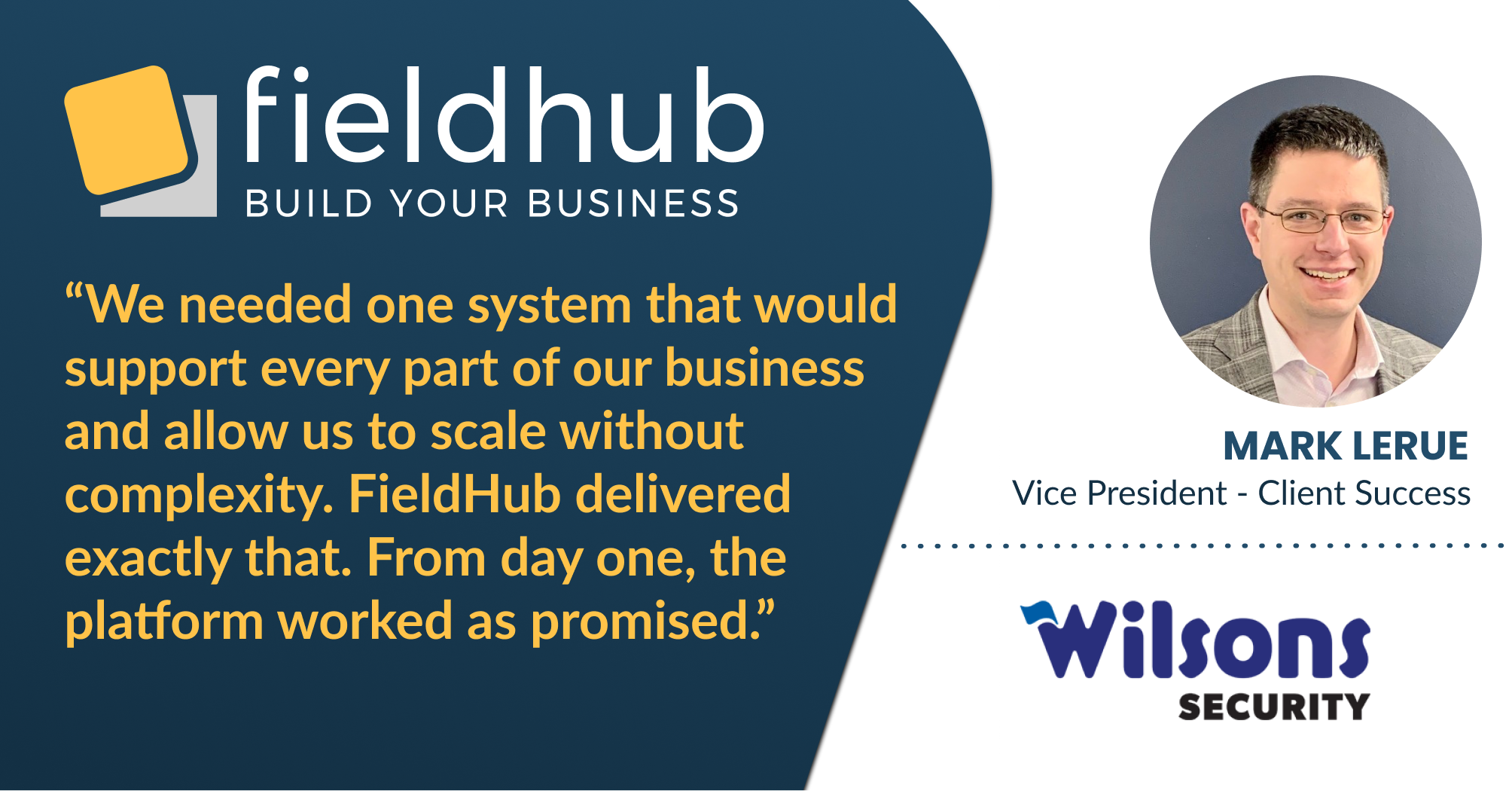With today’s global reality, we wanted to take the opportunity to share some of our favorite resources to help security installers acclimate to a remote working model.
From the very beginning, we built FieldHub around distributed teams. We have key team members in the US, Canada, and Europe. Even before launching FieldHub, I ran my security integration business, Urban Alarm, with distributed teams. From accounting and HR to provisioning video servers and IP cameras, our team members were dispersed across the globe. We shared one of our configurations for remotely provisioning IP gear in a previous post here.
In this post, we have collected the tools we’ve used over the years that have made this model a success.
Video Conferencing
- Zoom (www.zoom.com):Zoom has received the most attention over the past few weeks for its ease of use and configurability. It is a reasonably-priced service which, even in the massive ramp up during social distancing, has remained reliable and stable.
- Jitsi Meet (meet.jit.si): If your need for video conferencing is less frequent or you want to minimize your expenses right now, the free video conferencing service meet.jit.si has been around for years and works well. At the start of the coronavirus emergency they struggled a bit to keep up with the demand, but they ramped up and the service has stabilized.
- Miro (www.miro.com): Miro is less videoconferencing and more shared whiteboard for brainstorming and planning. Document formats are flexible and can be used for remote mind mapping, project management, and general brainstorming.
Distributed Phone Services
- Zoom Phone (zoom.us/phonesystem): ZoomPhone provides a very flexible and capable phone service that integrates tightly with their video conferencing service. If you want the simplest solution and you’re willing to spend a little extra money, this is a great solution for combined video conferencing and distributed phone services for your team whether they’re in the office or working remotely.
- Sip.us (sip.us): This barebones telephone service allows you to quickly setup phone numbers from all over North America and configure those numbers to go to voice over IP devices (e.g., IP Phone) or forward to other phone numbers. The failover settings allows phone numbers to forward to a specified number or go straight into a cloud-based voicemail if the VOIP device is not accessible.
- Google Voice (voice.google.com): The service is quick to set up and, free (in North America) to use in North America. It supports voice calls and texting using your Google Voice phone number. It’s easy to use through a web browser or through an app on your iPhone or Android phone.
- OBiTalk (www.obitalk.com): If you’re using Google Voice, this service allows you to connect a desktop handset phone to your Google Voice number. You can take your phone with you and stay connected using the desktop phone or reverting to the Google Voice Web or mobile application. Once you purchase a compatible phone (or a converter to work with a traditional phone), there are no ongoing costs for basic service when using your Google Voice account.\
We’re skipping file sharing and document creation since most organizations are using Microsoft 365 or Google which are both going to provide flexibility and functionality for a distributed team.
- Backblaze (www.backblaze.com): Once your distributor team starts compiling data on laptops and remote computers, it becomes increasingly important to have centralized backups. Backblaze provides very cost-effective and easy to manage tools for backing up all of your devices to the cloud.
- TeamViewer (www.teamviewer.com): If your team will be accessing desktop computers in your office while working from home, TeamViewer can be a quick way to set up remote access even if accessing computers running different operating systems.
- ChromeBooks (www.google.com/chromebook/): If you need to provide your team with devices to access resources while they’re working remotely Chromebooks are cost-effective and relatively secure simple solution . When used with the Google suite of tools for word processing, spreadsheets, etc., ChromeBooks also promote security: information is more secure than with other devices, since very little is stored on the device itself. These devices require a Google account.
Other Distributed Team Resources
- Privacy.com (www.privacy.com): The online payment service is great for managing purchasing in normal times but has added value when the team is distributed. The service enables you to link multiple bank accounts and create single-use debit virtual “cards” that are shared with vendors team members. These single-use virtual cards can be loaded with the charge limit tied to the specific purchase, giving you control around spending and streamlining the process for your remote workers. You may also use it to pay some bills without cutting or mailing checks.
- Hubstaff (hubstaff.com): Hubstaff is a time-tracking solution that helps keep a closer watch on remote team member’s productivity. This application will not only track time, but will capture periodic screenshots and activity notes on what applications are being used. Some employees may consider their “productivity monitoring” invasive, but for managers and teams adapting to distributed working it can be a useful tool.
Photo Credit: Photo by Andrew Neel on Unsplash



